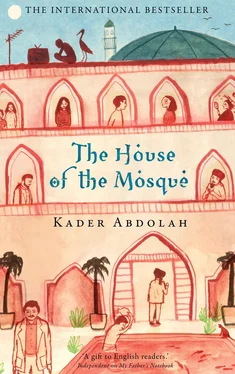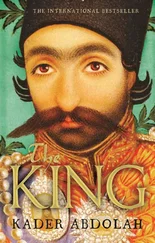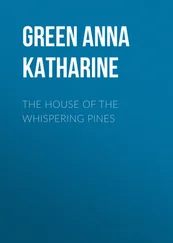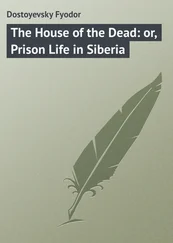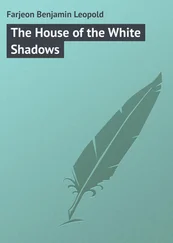Two policemen came striding up, but didn’t dare to intervene. One of them reported the incident on his walkie-talkie. A while later a van pulled up with a squad of riot police, but since they hadn’t been ordered to disperse the crowd either, they merely kept an eye on things. The situation in the country was so tense that anything they did could trigger a riot.
On the one hand, it could be viewed as a minor incident in which a crippled child had climbed onto the statue of the shah. On the other hand, his innocent antics were not without political overtones.
The weakness of the regime was obvious to everyone who saw Lizard cavorting on the horse. Yet no one could have suspected that the shah’s statue would soon be toppled by a hysterical mob.
The next day the front page of the local newspaper featured a picture of Lizard, dangling from the neck of the royal horse. Within an hour the paper had been sold out — for the first time in its history.
Everyone who read the article hurried over to the mosque to see Lizard with their very own eyes. They usually found him sitting on the roof.
It was a turning point in Lizard’s life. He had always been in the habit of climbing to the top of one of the minarets — where the storks used to have their nests — to read his books. Now he had an audience.
No one had ever come to the mosque to demonstrate, but nowadays hundreds of young people came every day to see Lizard.
‘You’re a bad influence on him,’ Aqa Jaan grumbled to Nosrat on the phone.
‘What do you mean? I don’t see the problem.’
‘He climbs into the minaret like a monkey. He’s turning into a major attraction here in Senejan.’
‘Let him do something he enjoys. Besides, it might help to improve the mosque’s image.’
‘We’re talking about a mosque, not a circus. We shouldn’t make ourselves more ridiculous than we are already. First that business with Ahmad, and now Lizard.’
‘I’ll talk to him,’ Nosrat said.
Two nights later Nosrat once again took the night train to Senejan.
He had no way of knowing that this was the last trip he would ever make to his home town with a head full of black hair. The next time he came, his hair had turned grey and his face had changed so much that no one recognised him.
Nosrat asked Lizard to come to his room. He had a handful of flyers with a black-and-white photograph of Khomeini on the front, which he stuffed into the boy’s pockets. ‘The next time a lot of people are gathered outside the mosque,’ he instructed him, ‘climb into your minaret and toss these flyers down to them. You got that? See, like this,’ he said, flicking his wrist. ‘All of them in one throw.’
At eleven-thirty Lizard climbed into the minaret. After a few wild leaps to attract everyone’s attention, he tossed the flyers to the crowd. Nosrat, positioned on the roof, began snapping pictures of the swirling flyers and the people trying to catch them.
The images appeared in every major newspaper in Iran.
It was the first time a photograph of Khomeini had ever been published in a newspaper. The regime was caught off-guard, but was unable to take any action since the newspapers were united in their support of the publication. Aqa Jaan bought the papers and tucked them into the chest in which he kept his journals.
Nosrat and his camera were on hand for every major event. The photographs he took of these landmark moments were printed daily in the newspapers.
He also had a cine camera, which he’d used to film the first big demonstration in Tehran, the one that had been led by Beheshti, who had crossed the border illegally to lead it. Nosrat had done a good job of documenting the presence of the ayatollahs and conveying the strength of their leadership.
When you watched his film reports, you could see what was in store for the nation.
Nosrat regularly sent his extraordinary footage to the Revolutionary Council in Paris. As a result, he and Beheshti developed a close working relationship. Beheshti began phoning him at home to tell him when a demonstration was going to be held so Nosrat would be sure to film it.
The Council then arranged for a man who worked at the airport in Tehran to function as a secret go-between. Nosrat was instructed to hand him the pictures and film rolls, which were then put on the next flight to Paris.
Nosrat was supposedly neutral, but sometimes he wondered which side derived the most benefit from his work. Was he making propaganda for Khomeini? No, he wasn’t committed to any person or any cause. Religion meant nothing to him. Nor did politics. He thought only of his camera. Other people’s wishes or his own personal viewpoint didn’t matter. He simply recorded what he saw.
Nosrat was also secretly in touch with Shahbal. He often gave him photographs, which Shahbal then published in his underground newspaper. One time they ran into each other at a demonstration and had a long talk. Nosrat had read Shahbal’s newspaper, so he knew that his party was sharply divided on the issue of the Islamic state that Khomeini was hoping to establish.
As Khomeini’s displays of power escalated, the leftist underground factions were confronted with the question of how to deal with him. Should they support Khomeini, or should they align themselves against him? Heated debates resulted in a painful break-up: a tiny minority refused to support Khomeini, choosing instead to continue their work underground, while the majority opted to lay down their weapons and support Khomeini’s anti-American crusade.
Shahbal, who had left the university long ago, sided with the majority.
The turning point came on the seventeenth day of the month of Shahrivar. The ayatollahs in Tehran had joined forces in an effort to get as many people as possible into the mosques. At eight o’clock that Friday evening the worshippers left their mosques and marched to Parliament Square, shouting slogans all the way. Both Khomeini supporters and the regime were determined to show their strength.
As thousands of demonstrators headed towards Parliament Square from every corner of Tehran, soldiers left their barracks, determined to teach the protestors a lesson.
The man in charge, General Rahimi, was sitting in an army jeep parked in a corner of the square, keeping an eye on things from behind his dark glasses. When every inch of the square was packed with protestors, he ordered his tanks to block off the side streets so the crowd wouldn’t be able to escape.
Meanwhile, the unsuspecting demonstrators were passing out flowers to the soldiers, which the soldiers gladly accepted. ‘Peace! Peace!’ the crowd roared. ‘Peace, soldiers!’ And the officers in the square waved peacefully back.
What the crowd didn’t know was that the goal of the demonstration was actually to seize and occupy the Parliament. Nosrat had been informed ahead of time and already had his camera in position.
As soon as the first row of demonstrators reached the Parliament, a handful of young men started to climb the fence. Sharpshooters on the nearby roofs opened fire, and the young men fell to the ground, dead.
People fled every which way, screaming, ‘ La ilaha illa Allah! ’
Despite the mad scramble, dozens of other young men ran towards the gate and tried to scale the fence, but the sharpshooters shot them down as well.
‘ La ilaha illa Allah! ’ the protestors cried, pushing and pulling the fence, trying to tear it down so they could get inside the building. But before they got the chance, the army opened fire on the crowd from all four corners of the square.
Within minutes, there were hundreds of dead and wounded.
Nosrat, safely ensconced on a nearby balcony, recorded the incident on film.
The soldiers chased after the demonstrators, shooting everyone in sight. Women pounded on the doors of houses, begging to be let in, while men climbed onto roofs and into trees, and children crawled under cars. The streets were strewn with shoes, jackets, caps, cameras, headscarves and hundreds of black chadors.
Читать дальше
